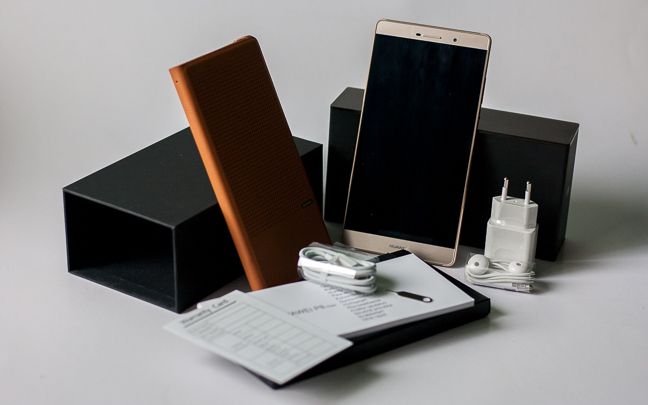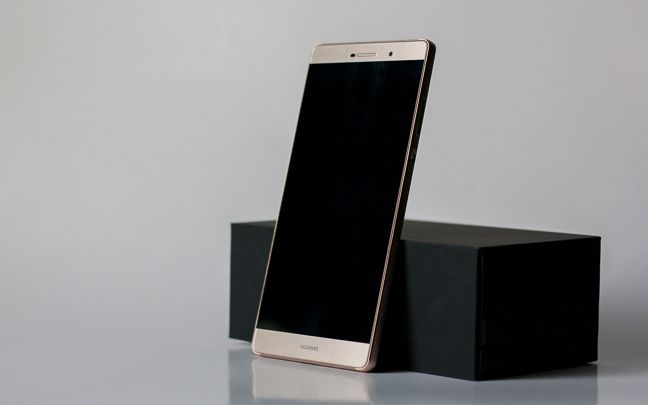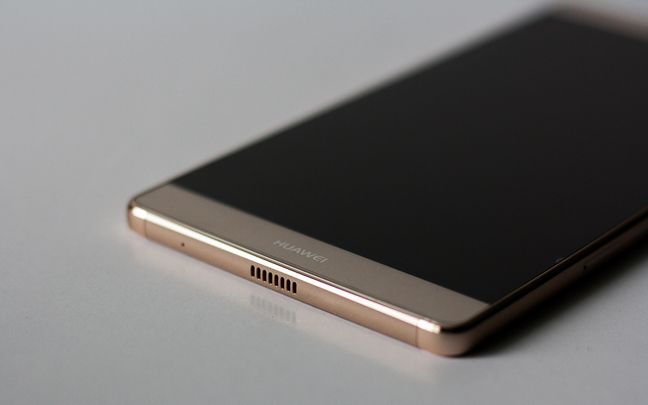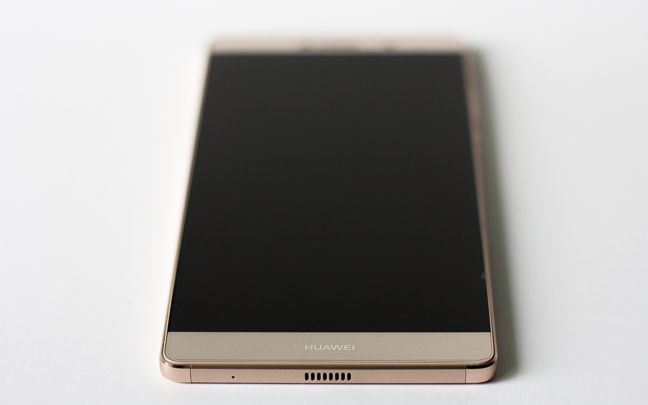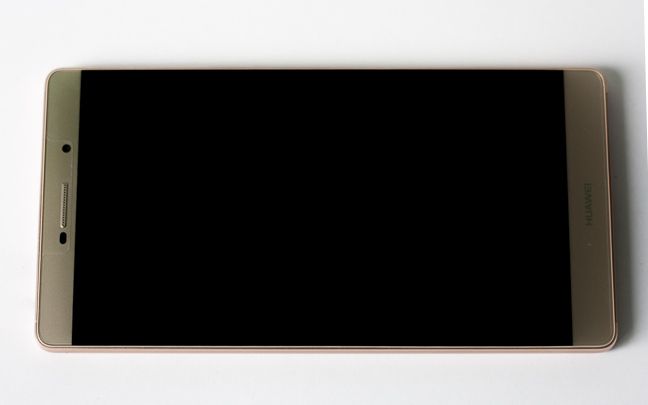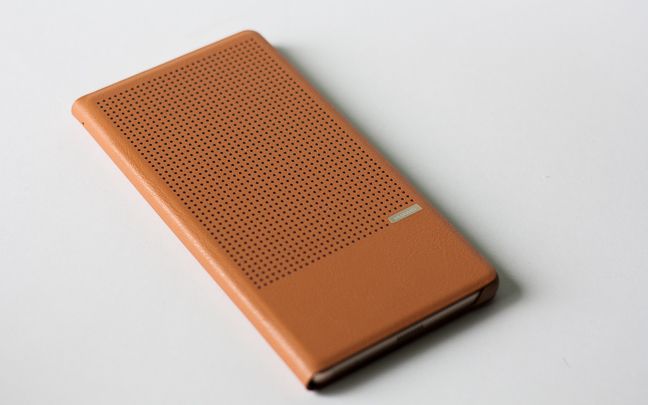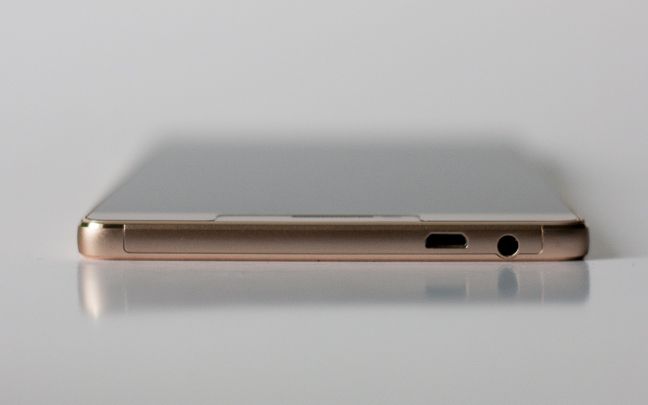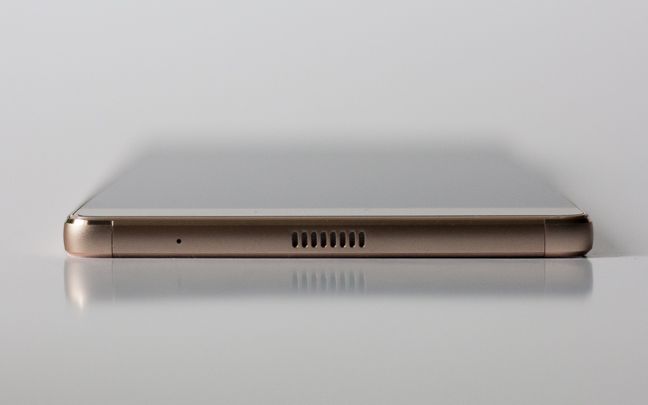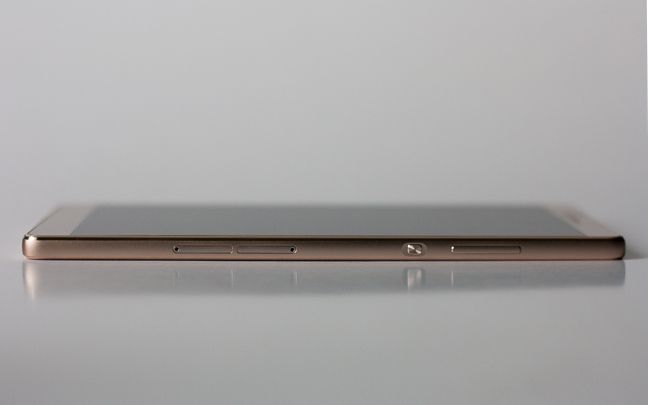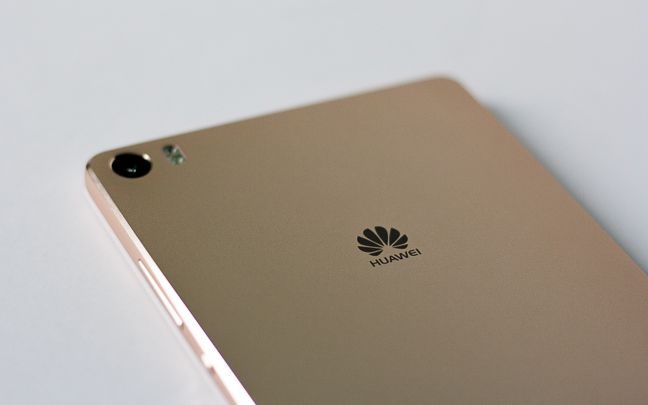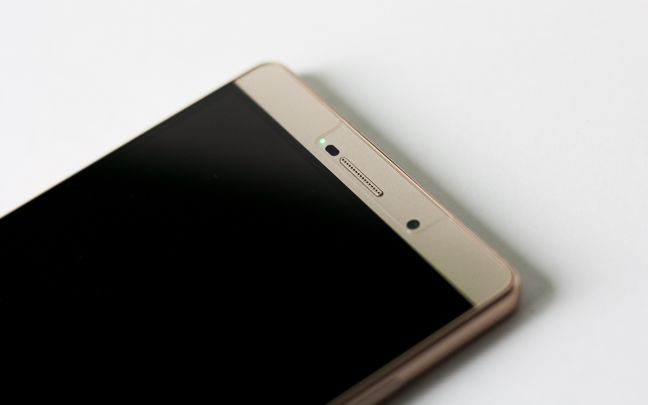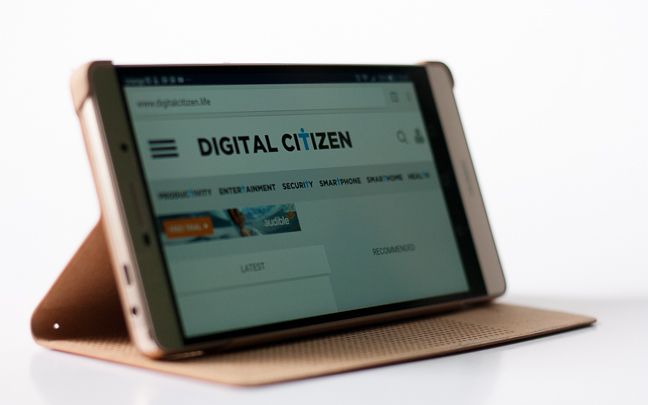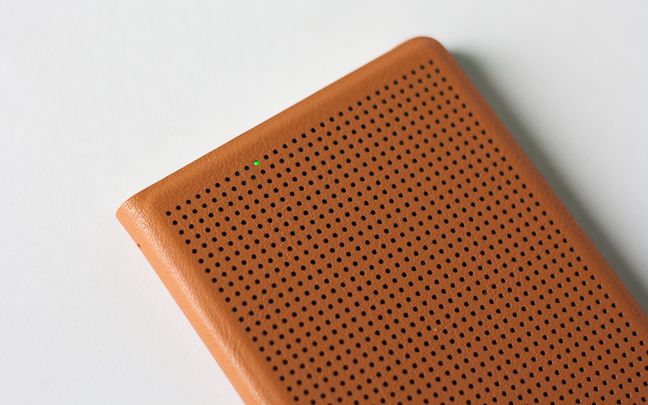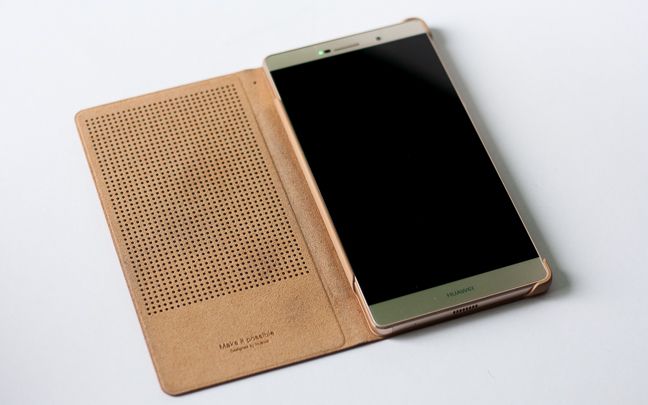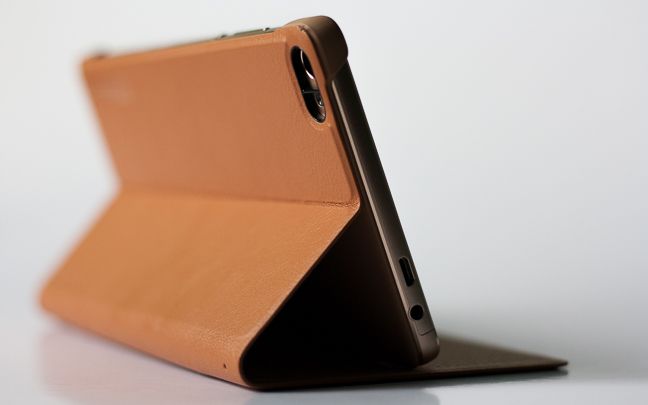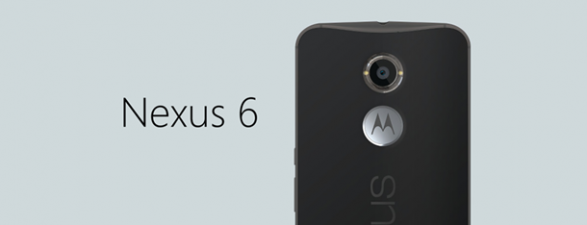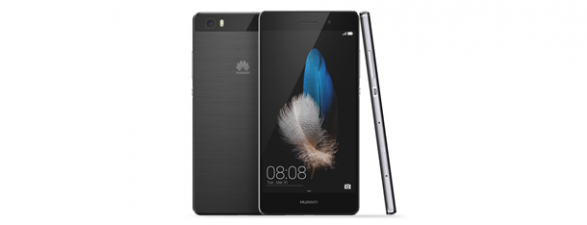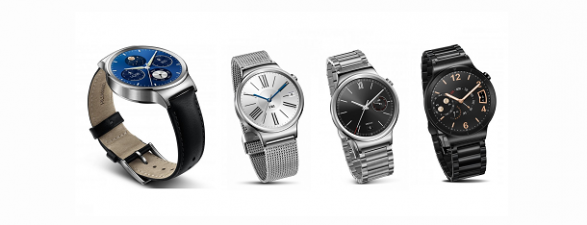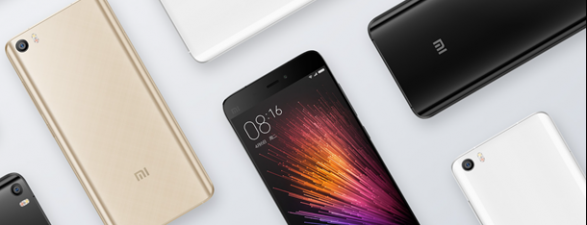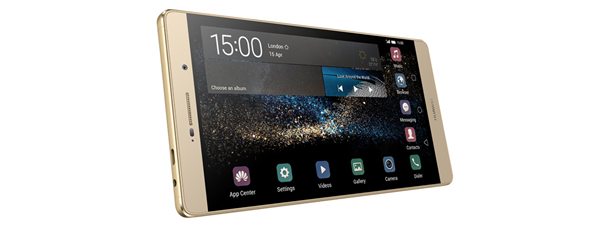
They say that tablets are done for: more and more technology professionals forecast a quick end for these devices, as their popularity is on the decline. One of the main reasons for this is the appearance of phablets - smartphones with sizes comparable to tablets. These larger handhelds are basically two-in-one devices that make tablets redundant. Huawei's own P8max is one such smartphone: it's definitely big and it can replace a tablet. Read our review to find more about all its other features:
Hardware specifications and packaging
The Huawei P8max arrived in a hard case made from black plastic, with a minimalistic and elegant design. It is a bit unconventional, as it is in fact a wrapper that has every component inside. It has the smartphone's name printed in gold on it and that's about it.
From this wrapper you can slide out two components: another plastic box that holds the P8max and its accessories, and a smaller cardboard box that has a smart cover inside. It is a rare and very welcome sight to see, as very few smartphones come with a cover inside the box, so we were genuinely happy about this one. It is a leather flip cover that has some really neat features, but we'll talk about these a bit later.
The plastic box has a lid that can be taken off, and underneath we can see a design similar to a car CD player: t here is a small gap from which the smartphone slides ou t, which looks like a CD being ejected. After taking out the smartphone, you have to slide another piece of plastic in order to reveal two other slots, which each have a cardboard box inside. One of them holds the smartphone's accessories (charger head, microUSB cable, headset and a small pin for the SIM tray), while in the other you can find the documentation and the warranty papers.
Upon taking out the smartphone, it becomes immediately obvious why the word "max" is present in its name: because it is shockingly huge. I personally use a Oneplus One smartphone and a Nexus 7 tablet everyday, neither of which are small devices, but the Huawei P8max is much bigger than my smartphone and just a bit smaller than the tablet. Seeing this gigantic size we couldn't help but laugh at first, thinking about how we could make phone calls with such a device.
Apart from its size we must note that the first impression is generally favourable, as the P8max is a unibody smartphone that is designed with simplicity in mind. It is available in three colors: Luxurious Gold, Mystic Champagne and Titanium Grey, the latter being the most conservative of the three colors that could appeal to most of the buyers. We had a Luxurious Gold device for testing and, interestingly, in this case this isn't such a flashy, show-off color like at other manufacturers.
As for its specifications, the Huawei P8max has a gigantic, 6.8" LTPS IPS LCD touchscreen with a resolution of 1920x1080 pixels and a pixel density of 326 ppi, this being protected with a Corning Gorilla Glass 3 coating. No need to explain, at such a huge size, the P8max is much more of a tablet than a simple smartphone, thus being a perfect representation of the phablet category of devices. It's not easy to use it with a single hand (although there are software solutions that help you do so), as it is 7.19 inches or 182.7 mm tall, 3.66 inches or 93 mm wide, but it's still quite slim, being just 0.27 inches or 6.8 mm thick. Of course it weighs quite a lot, more precisely 8.04 oz or 228 grams, so you will most probably not keep it in your shirt pocket. You might even want to forget your pants pocket as well: even if it fits, you won't really be able to walk up or down the stairs, as it will hurt your legs, or you might break the smartphone.
On the inside, the heart of this big baby is Huawei's own HiSilicon Kirin 935 chipset that comprises of two quad-core Cortex-A53 CPU's, one of them ticking at 2.2 GHz, while the other has a clock speed of 1.5 GHz. The graphics are handled by an ARM Mali-T628 MP4 with OpenGL ES 1.1/2.0/3.0/3.1*, DirectX 9/11, OpenCL 1.1 Full Profile and Google RenderScript support. The P8max is equipped with 3GB of RAM and has 64GB of flash storage space, which can be extended with a microSD card of up to 64GB in size. It is good to know that if you wish to use a microSD card, you have to give up the dual SIM capability, as the microSD card will take up the second, nano-SIM slot.
As we have already mentioned, the P8max is a dual SIM device, with a micro and a nano-SIM slot. These work in dual standby mode, meaning that while you're talking on one SIM card, the other one is in standby, not able to receive calls. Both SIM slots have 4G support, although only one can connect to these high-speed networks at a time.
The device has a 4360 mAh Li-Polymer, which cannot be replaced - this is rather common, albeit unwelcome, practice nowadays, mostly in high-end models. Although the P8max is more of a top mid-range competitor, it still doesn't have a replaceable battery.
The smartphone's primary, rear-facing camera has a resolution of 13 MP, an aperture size of f/2.0, autofocus, optical image stabilization and dual-LED (dual tone) flash and can record 1080p videos at 30fps, while on the front we have a 5 MP secondary camera.
In terms of connectivity the P8max supports all network types from 2G to LTE, although the specific frequencies are not mentioned in its online specifications. We do know however, that on LTE we have a theoretical maximum download speed of 300 Mbit/s (with support for intra-band contiguous Carrier Aggregation, carrier network dependent) and a download speed of 50 Mbit/s, while on DC-HSDPA+ the theoretical maximums are 42 Mbit/s and 5.76 Mbit/s for download and upload respectively.
Of course the smartphone supports WiFi networks as well (using the IEEE 802.11ac/a/b/g/n standards on the 2.4 and 5 GHz frequencies), has a 4.0 Bluetooth chip with A2DP (which is backwards compatible with Bluetooth 3.0 and 2.1+EDR), GPS/A-GPS/Glonass/BDS (country-dependent) support for location and navigation, a microUSB 2.0 port and FM Radio support that works with a headset plugged in the 3.5 mm jack port.
The full set of hardware specifications can be found here: Huawei P8max specifications.
Based on its technical specifications, the Huawei P8max is a large, phablet-type, mid-range smartphone, with most of the category's generic traits being present. Its size is one of its most important features that set it apart from other handsets, and it is surely the first thing to consider about it when making a purchasing decision.
Design and build quality
The P8max inherits the design principles from its brother, the Huawei P8: this means a unibody smartphone with a simplistic, yet elegant design, that doesn't have many noticeable features, thus maintaining a low-key outlook. Of course the most prominent feature of the phablet is its screen: the gigantic, 6.8 inches touchscreen is extremely large, so you will never be short of space when working with it.
Just above the display you can see the 5 MP secondary camera, the speaker and a light sensor. The frontal camera has no flash, the only other feature on the front of the smartphone is the manufacturer's name, right below the screen. There is no separate, visible row for the default Android keys - they appear on the screen when it is turned on.
On the device's top edge you can see the two connectors: a 3.5 mm jack and a microUSB 2.0 port, that can be used for both charging the device and connecting it to a computer for data transfer. As for the audio jack, the P8max comes bundled with a set of earphones that have an average audio quality and are also used as an antenna for the FM radio.
The bottom edge houses just the microphone and the loudspeaker, while the left edge is basically empty. The right side of the smartphone has many more features, starting with the volume keys on the top. Right below them there is the power key, which is the best place to place it on such a large device. A bit lower you can see the two SIM slots: the one on the bottom is the primary slot that uses a microSIM, while the top slot is a nanoSIM slot, or it can also be used for a microSD card to extend the smartphone's storage capacity.
The back panel is a smooth piece of metal, its most important feature being the 13 MP main camera in the top left corner and the dual-tone LED right near it. In the center of the back panel we can also see the Huawei logo, while the bottom part is a black stripe, made of a different material than the rest of the panel.
The build quality is rather good, although we must note that it would have been a good idea to use a less slippery material on the back panel. As the Huawei P8max is really large and heavy, it can fall from your hands. It's actually quite hard to get a good grip on it, not to mention that you will probably have to hold it with both your hands to be able to properly use it.
The screen has good contrast and it's easy to read even in bright sunlight, although it's obvious that the pixel density is not very high - you won't see pixels or fuzzy edges, but it's not the absolute highest quality. The Gorilla Glass 3 coating will protect it from scratches, but fingerprints will be a problem - it looks like the screen doesn't have oleophobic coating.
The device we had for testing came with a smart cover that is quite possibly the best thing that can happen to the Huawei P8max. It is a flip case made out of high-quality brown leather that not only protects the smartphone from physical harm, but also makes it look cool and easy to hold. It has a dot-matrix front, which makes it smart: with the flip cover closed you can still see time and weather information, as well as incoming calls - you can even answer them, the Huawei P8max recognizes touches through the case as well.
Still, the smart cover has its share of problems too: when the smartphone is in the cover, some apps' notifications have no sound at all. This was the case for Gmail and WhatsApp, but some users have reported the same problem with other apps as well. It seems to be a software bug, as calls and text message notifications have no problem, but it is still very annoying. We can only hope that this issue will be fixed with a software update in the near future - during the time when we tested the smartphone, there were no software updates available.
The Huawei P8max is one big smartphone: being as much of a tablet as it is a smartphone, it surely targets only a small segment of users. Many can be put off by such a large device, but there are times when it does come in handy. Its design is very elegant and it is made of rather high quality materials so, apart from its size, there are no deal-breaker features. The smart cover is a nice addition, even with its share of bugs.
The smartphone experience on the Huawei P8max
Based on its price, the hardware and the features it offers, it is safe to say that Huawei P8max is a mid-range smartphone - do not let yourself be misled by its large size - it doesn't necessarily mean that this is one of the most expensive phones to use.
As we have already mentioned, the display's quality is quite good, the only noticeable flaw is the lower pixel density. Although it has a Full HD resolution of 1080x1920 pixels, due to the large screen, the pixel density is of only 326 ppi. When using the device on its own, one can barely notice this, but if it is compared to a high-end smartphone, it becomes quite clear that the Huawei P8max is a mid-range device with a mid-range screen.
In terms of speed the Huawei P8max fared quite well. Everyday tasks carried out without delays, we didn't experience any major slowdowns. Still, the operating system lagged a bit sometimes, which was mostly noticeable when browsing the web. It is far from being frustrating, but there is a constant feeling that everything could be just a bit faster. Fortunately there were no scrolling lags or screen tears, only the loading times are longer than in the case of higher end smartphones.
Our first experience with audio quality was when the smartphone first rang - and it was extremely loud. It is highly recommended that you fine-tune the ringtone volume, as it can get quite scary. Otherwise the loudspeaker's quality is mediocre: you can listen to music, but don't have any high expectations. Since the screen is large, it can be a good choice to watch movies in bed, but you might want to use a good earphone or headphone. During calls, sound quality was exceptional, there is nothing to complain about.
The P8max worked flawlessly with our mobile network, it didn't lose connection at all, and remember that if you have a nanoSIM card, you can use that as your SIM as well, and have 4G access, but in that case you can't install a microSD card.
Unfortunately the P8max we had for testing had a nasty bug regarding WiFi connectivity. When the smartphone was moved out of range of a WiFi network it was connected to, it couldn't detect ( and couldn't connect to) other WiFi networks, unless its WiFi module was turned off and on again.
So, for example, you are at home, connected to your home WiFi and then go to work. The P8max won't see the workplace WiFi (even if it had been previously connected to it), instead it will still show you the home WiFi and any other networks that were in range back there. Of course, it only takes a couple of taps to turn the WiFi off and on. This is not only annoying but can also cost you money on your data plan. We think this is a major bug, that should be fixed ASAP.
Navigation worked perfectly on the P8max: the GPS module connected rapidly to the satellites and had a stable connection. Given the really large screen, the smartphone can be a top-notch car navigation device.
The smartphone's specifications don't list the expected talk time for the Huawei P8max, but given the 4360 mAh battery we were expecting some really impressive numbers. Of course, the large screen can be a big power drain, but the device still managed to stay on for over two days, which is a very good result. It has its own power saving features as well, but even with automatic brightness, always-on WiFi, disabled Bluetooth, location set to battery saving mode and an average number of phone calls, messages, active push email, and quite a lot of tampering with the web browser, the two-day battery life is really good.
Given the fact that charging doesn't take much more than two hours, it is safe to say that battery life and standby time won't really be one of your concerns, unless of course you tend to check your smartphone every two minutes.
Besides its unusual size and impressive battery life, all of its other features are characteristics of mid-range phones. Which is of course no problem, if you need a mid-range phablet. Its software bugs, however, are not only annoying, but can even cost you money - until these are fixed, they can make your life more difficult.


 19.05.2016
19.05.2016 